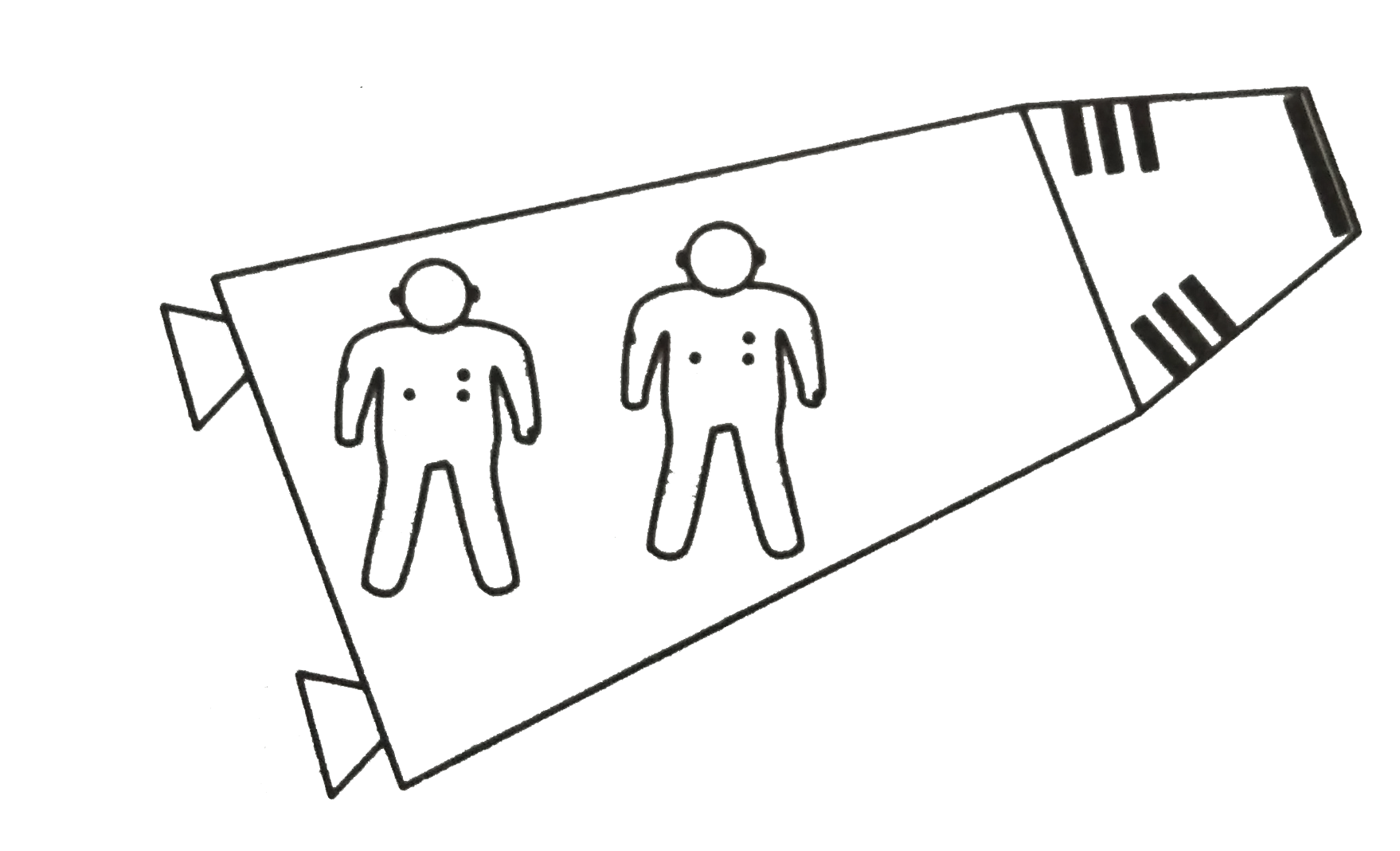A bomb initially at rest at a height of 40 m above the ground suddenly explodes into two identical fragments. One of them starts moving vertically downwards with an initial speed of 10 m/s. If acceleration due to gravity is 10 m/s2, the separation between the fragments, 2 seconds after the explosion is
To solve the problem, we need to analyze the motion of the two fragments after the explosion. Let's break it down step by step.
Step 1: Understand the situation
The bomb is initially at rest at a height of 40 m. After the explosion, it splits into two identical fragments. One fragment moves downwards with an initial speed of 10 m/s, while the other fragment moves in the opposite direction (upwards).
Step 2: Apply the conservation of momentum
Since the bomb was initially at rest, the total momentum before the explosion is zero. By the conservation of momentum, the momentum after the explosion must also be zero.
Let:
- v1 = velocity of the first fragment (downwards)
- v2 = velocity of the second fragment (upwards)
From conservation of momentum:
mv1+mv2=0⟹v1=−v2
Step 3: Determine the velocity of the second fragment
Given that the first fragment moves downwards with a speed of 10 m/s:
v1=10m/s(downwards)
Thus, the velocity of the second fragment is:
v2=−10m/s(upwards)
Step 4: Calculate the distance traveled by each fragment after 2 seconds
Using the formula for distance traveled under constant velocity:
s=vt
For the first fragment (downwards):
s1=v1⋅t=10m/s⋅2s=20m
For the second fragment (upwards):
s2=v2⋅t=(−10m/s)⋅2s=−20m
(Note: The negative sign indicates the upward direction.)
Step 5: Calculate the total separation between the two fragments
The total separation between the two fragments after 2 seconds is the sum of the distances traveled by both fragments:
Separation=s1+|s2|=20m+20m=40m
Conclusion
The separation between the fragments, 2 seconds after the explosion, is 40 meters.
---
The bomb is initially at rest at a height of 40 m. After the explosion, it splits into two identical fragments. One fragment moves downwards with an initial speed of 10 m/s, while the other fragment moves in the opposite direction (upwards).
Since the bomb was initially at rest, the total momentum before the explosion is zero. By the conservation of momentum, the momentum after the explosion must also be zero.
- v1 = velocity of the first fragment (downwards)
- v2 = velocity of the second fragment (upwards)
mv1+mv2=0⟹v1=−v2
Given that the first fragment moves downwards with a speed of 10 m/s:
v1=10m/s(downwards)
Thus, the velocity of the second fragment is:
v2=−10m/s(upwards)
Using the formula for distance traveled under constant velocity:
s=vt
s1=v1⋅t=10m/s⋅2s=20m
s2=v2⋅t=(−10m/s)⋅2s=−20m
(Note: The negative sign indicates the upward direction.)
The total separation between the two fragments after 2 seconds is the sum of the distances traveled by both fragments:
Separation=s1+|s2|=20m+20m=40m
The separation between the fragments, 2 seconds after the explosion, is 40 meters.
Similar Questions
A shell is fired from a cannon with a speed of 100m/s at an angle 30∘with the vertical (y-direction). At the highest point of its trajectory, the shell explodes into two fragments of masses in the ratio 1:2. The lighter fragment moves vertically upwards with an initial speed of 200m/s. What is the speed of the heavier fragment at the time of explosion?
View SolutionA stone is dropped freely while another thrown vertically downward with an initial velocity of 4 m/s from the same point simultaneously. The distance of separation between them will become 30 m after a time of
View SolutionA and B are thrown vertivally upward with velocity 5m/s and 10 m/s respectively (g=10m/s2 ) . Find separtion between them after one second .
View SolutionA stone of mass m1 moving at uniform speed v suddenly explodes into two fragments. If the fragment of mass m2 is at rest, the speed of the other fragment is
View SolutionA block at rest explodes into three equal parts. Two parts start moving along X and Y axes respectively with equal speeds of 10 m/s. Find the initial velocity of the third part.

View SolutionA projectile of mass 50kg is shot vertically upwards with an initial velocity of 100m/s. After 5s, it explodes into two fragments, one of which having a mass of 20kg travels vertically up with a velocity of 150m/s:
a. What is the velocity of the other fragment that instant?
b.Calculate the sum of rnornenta of fragment 3s after the explosion. What would have been the momentum of the projectile at this instant if there had been no explosion?
View SolutionA pebble is thrown vertically upwards from a bridge with an initial velocity of 4.9 m/s. It strikes the water after 2s. If acceleration due to gravity is 9.8m/s2(a) what is the height of the bridge? (b) with what velocity does that pebble strike the water?
View SolutionA ball is thrown vertically upwards. It goes to a height 20 m and then returns to the ground. Taking acceleration due to gravity g to be 10m s−2 ?, find the initial velocity of the ball
View SolutionA shell of mass 2kg moving at a rate of 4m/s suddenly explodes into two equal fragments. The fragments go in directions inclined with the original line of motion with equal velocities, If the explosion imparts 48J of translational kinetic energy to the fragments, find the velocity and direction of each fragment.
View SolutionA cannon ball is fired with a velocity 200m / sec at an angle of 60° with the horizontal. At the highest point of its flight it explodes into 3 equal fragments, one going vertically upwards with a velocity 100 m / sec , the second one falling vertically downwards with a velocity 100 m / sec . The third fragment will be moving with a velocity
View Solution
